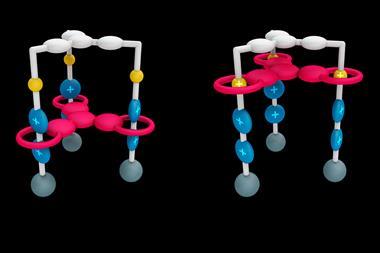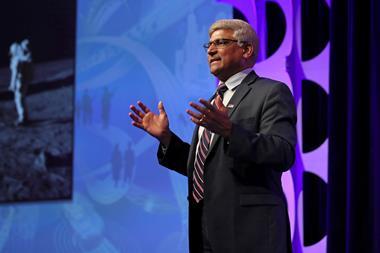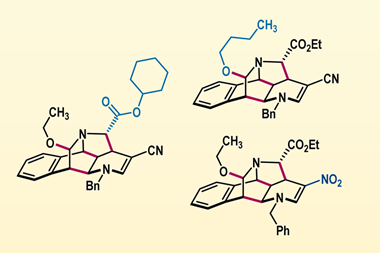Improving the efficiency of your fume cupboards could save you hundreds of pounds a year, explains Benjamin Martin
Improving the efficiency of your fume cupboards could save you hundreds of pounds a year, explains Benjamin Martin
Fume cupboards are used extensively in industry, research organisations, hospitals, universities and schools. Like many other pieces of laboratory equipment their purchase represents a considerable investment. But their lifetime running costs are often many times greater than the capital outlay.
Action Energy is a government programme designed to help organisations cut their energy bills. When Action Energy recently asked fume cupboard operators about energy consumption, most replied that they would consider the fan to be the greatest consumer of energy. In reality, the fan uses a relatively small amount of a fume cupboard’s overall energy use. Most people overlooked the fact that fume cupboards extract huge amounts of air which, for most of the year, will have been heated and, in some cases, cooled. Energy is then needed to heat or cool the replacement fresh air.
Action Energy’s work with the chemical industry shows that employees are often not trained how to use fume cupboards efficiently. As with many other energy management issues, energy efficiency can be considered secondary to an overriding responsibility for employee and public safety. The energy efficiency of a fume cupboard installation depends not only on the design of the cupboard, but also on the design of the air supply and extract systems. All three elements of the system need to be integrated and should be specified together, taking account of appropriate legislation and regulations.
To improve our understanding of energy use in fume cupboards, Action Energy has published Good Practice Guide (GPG) 320, Energy-efficient design and operation of fume cupboards. It is aimed at laboratory managers, facility managers, engineers and fume cupboard users. The guide covers topics on energy efficient features and operation and includes tips for laboratory managers on day-to-day management of fume cupboards. There are a series of questions and worked examples, which allow users to estimate a fume cupboard’s energy costs.
The guide states that the typical annual energy cost of a fume cupboard with heating and cooling running continuously is ?760 per year. By switching everything off outside of working hours, the annual energy cost reduces to ?190 per fume cupboard - a 75 per cent saving. If the average site operates 10 fume cupboards this simple measure equates to an annual saving of ?5700 without any capital investment.
The introduction of good practice techniques can be used to reduce extraction rates and save the energy required to condition ’make-up’ air. These techniques vary depending on the type of system in operation. For single fume cupboards, the two-speed system is most suitable - where the extract fan is linked to a switch operated by the fume cupboard sash. As the sash is lowered to a half-open position, the fan is switched to a slower speed (usually 50 per cent) whilst maintaining the required velocity of air to ensure that containment is not affected.
Installations with several fume cupboards on a single extract system are common because of reduced capital costs for installing and maintaining ductwork. However, this type of installation is not energy efficient because it will not allow individual cupboards to be switched off when not in use. Installing a variable air volume (VAV) system, which controls air flow in the extract duct using variable-speed motors or dampers, can improve energy efficiency and maintain minimum face velocity while reducing extract volume.
When specifying an installation, it is important to consider the laboratory environment, which could affect performance of the fume extraction system. Consideration should also be given to initial capital costs, potential energy savings, location and the use of the fume cupboard.
Crown Copyright Reserved 2003.
Source: Chemistry in Britain
Acknowledgements
Benjamin Martin
Energy efficient features
Re-circulatory filtration/ductless fume cupboards: There is limited use for ductless fume cupboards because the selection of filters will depend on what chemicals are being used and in what quantities.
Two-speed system: This is possible only where each fume cupboard is connected to an individual fan system.
Variable-speed extract fan: Used for single fume cupboards where the speed of the extract fan varies according to sash height. Can be used in conjunction with automatic sash-closing sensors.
Variable air volume (VAV): Used for single-speed and variable-speed extract fans, on individual and central fan systems, and other energy efficient features listed.
Central fan system: Can be used for conventional fume cupboards at constant volume or VAV fume cupboard installations. Allows the incorporation of features such as fresh-air bleed.
Heat recovery system: Limited use due to possible corrosion problems and relatively low-temperature extract air. Can be fitted to existing systems.
Fresh-air bleed system: This system is good for use in conjunction with single-speed fans; it can also be used where several cupboards share a fan, in conjunction with a VAV system.
Automatic sash closing mechanism: Used in conjunction with a VAV control system to increase the energy savings.
Diversity factor: Needs to be used in conjunction with a VAV system. Application is limited by the number of cupboards that will be in use at any one time. Diversity cannot be applied where all fume cupboards work with sashes open at all times. Other features like fresh-air bleed can be incorporated.
Information
Action Energy helps businesses and organisations of all sizes to save money by improving their energy efficiency. Managed by the Carbon Trust, a UK government-funded body with a business focus, Action Energy provides the information, advice, practical help and financial support you need to start reducing your energy costs. Its principal aim is to reduce the level of carbon emissions by improving energy efficiency. To order a free copy of GPG320 or to find out more information about Action Energy and what it can do for you and your business, contact Action Energy or visit their website.






No comments yet